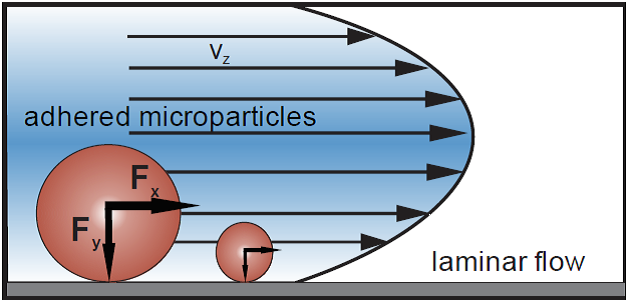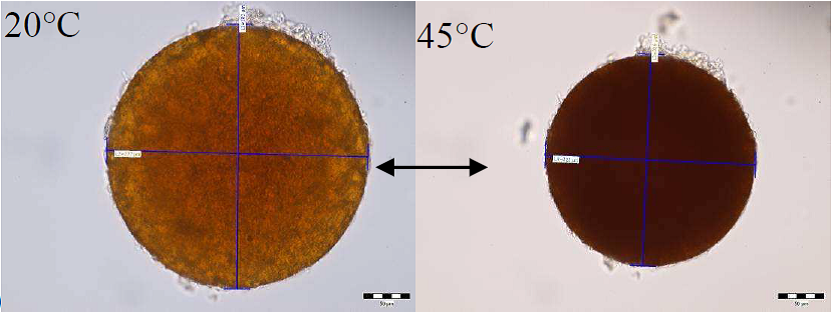František Štěpánek
Viola Tokárová
Anna Pittermannová
Stimuli-responsive hydrogels can reversibly swell or shrink by absorbing or releasing water in response to an external stimulus such as temperature, pH, ionic strength or electric field. Since the swelling/shrinking of the hydrogels is accompanied by a change of diffusion properties, it makes them ideal candidates for controlled release applications such as drug delivery. A commonly used thermo-responsive hydrogel is poly-N-isopropylacrylamide (PNIPAM) which has a lower critical solution temperature (LCST) of 32 °C due to the presence of both hydrophilic amide and hydrophobic isopropyl groups in its side-chains. The PNIMAM hydrogel is swollen at temperatures bellow 32 °C and shrinks at temperatures above 32 °C. Thermoresponsive microparticles based on crosslinked poly-N-isopropylacrylamide are widely studied for the encapsulation and targeted delivery of sensitive macromolecules such as enzymes, proteins, liposomes or DNA transport, by the change of environmental temperature.
For the design of a targeted delivery system, not only the release kinetics of the encapsulated compound from the microcapsule but also the interactions of the microcapsules with various substrates in the presence of a flowing fluid – i.e. their adhesion properties – are crucial. Similar to triggered release systems, it would be desirable to have the possibility to control the adhesion/detachment of a microcapsule by some external stimulus. The adhesion force between a particle and a substrate depends on the nature of their interaction (electrostatic interaction, hydrophilic/hydrophobic interaction, specific biological interaction such as ligand–receptor binding, etc.). When the attached particle is subjected to a flowing fluid, which would be the case in most situations relevant to targeted delivery, the hydrodynamic drag force acts against the adhesion force and their balance determines whether the particle remains attached to the substrate or not. The drag force acting on a particle depends on the fluid velocity v, the fluid viscosity µ, and the particle radius R, and can be calculated from the Stokes’ law F=6πµRv. Stimuli-responsive particle attachment/detachment can therefore be achieved either by changing the particle-substrate interaction (stimuli-responsive particle surface) or by changing the particle size. Composite microcapsules able to significantly change their diameter were prepared via Pickering emulsion polymerization and consisted of a poly-N-isopropylacrylamide (PNIPAM) hydrogel core and a monolayer of SiO2 nanoparticles on the surface.
Publications
Tokárová V., Pittermannová A., Čech J., Ulbrich P., Štěpánek F., “Thermo-responsive adhesion properties of composite hydrogel microcapsules”, Soft Matter 8, 1087-1095 (2012)


